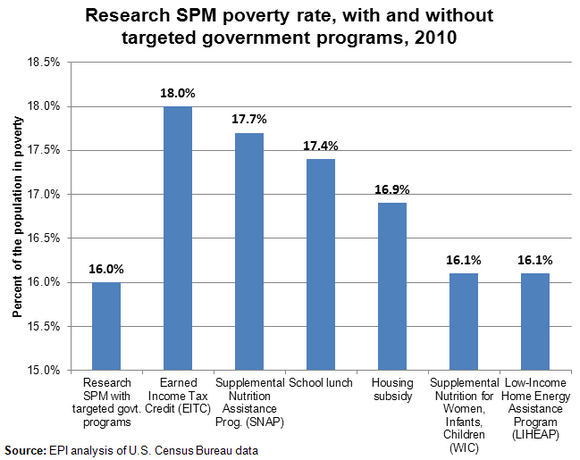The U.S. Census Bureau recently unveiled the Research Supplemental Poverty Measure (SPM), a more dynamic method of assessing poverty that shows, yet again, the dire circumstances of numerous Americans in the wake of the recession. The new measure shows higher levels of poverty – 49 million people, or 16 percent of the population under the SPM, versus 46.6 million, or 15.2 percent under the official poverty threshold – and a far greater proportion of people living at very modest means. According to the SPM, nearly half the United States lives within 200 percent of the poverty line.
The new measure is also useful because it examines poverty levels after government policy (e.g., food stamps, child care subsidies, etc.). In effect, it shows the ability of the government to mitigate the incidence of poverty. The figure below shows what the poverty rate would be under the SPM, in the absence of certain government programs. It should be noted that on top of these targeted government programs, non means-tested cash transfers—such as Social Security and unemployment insurance—also have an enormous role in alleviating poverty. A previous Census Bureau analysis estimated that 23.5 million people would fall into poverty without Social Security and unemployment insurance. Data on their effects under the SPM is not yet available.

